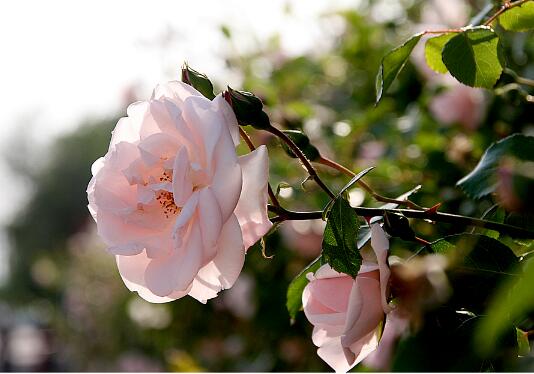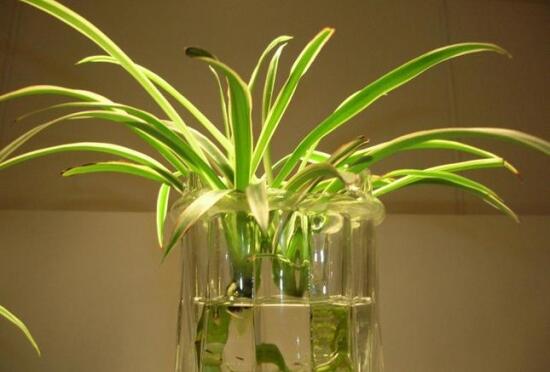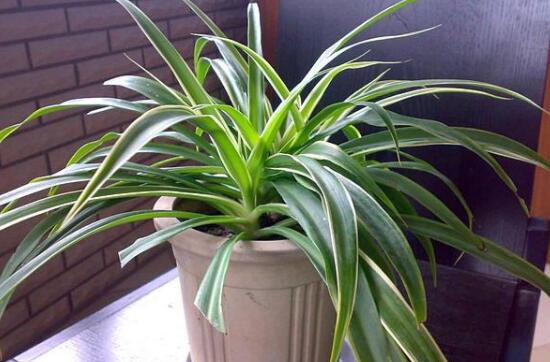Fujimoto rose how to pull climbing vines, two aspects take you in-depth analysis
Fujimoto rose is a kind of highly ornamental flower plant, and there are many people raising it in various parts of our country, but with more people breeding it, people are more concerned about its traction and climbing. So how does Fujimoto rose pull climbing vines? Next, the editor will take you to learn about it.
First, how to pull the climbing vine of Fujimoto rose

On how to pull the rattan climbing of Fujimoto rose, in fact, it is mainly divided into two aspects: pruning and traction climbing. As long as you master the correct method, it is still very easy to operate. The specific method of operation is described in detail below, let's take a look at it.
How to prune Fujimoto rose
1. Flowering branch pruning
When we are pruning the branches of Fujimoto rose, if we find that it has already blossomed, we need to pay attention to it when we pruning. We should trim off the more robust flowering branches and leave 2-3 bud spots on them, so that we can prepare for them to blossom again.
two。 Pruning of unflowered branches
When we prune the unflowered branch of the rattan rose, it is usually best to prune the top section of the branch. If we see a lot of flowering branches on the top, we have to prune its trunk and cut off all its flowering branches.
3. Old branch pruning
For those old branches of rattan rose that have been growing for more than 2 years, there will be new branches on them, so when we prune, we need to cut off all the old branches except where the new branches grow, so that after pruning, the new branches will replace the old branches and become the new trunk to continue to grow.
Third, how to pull the climbing vine of Fujimoto rose
1. Support selection
If we want to climb the vine this month, then we have to carry out traction. Before traction, we have to choose the support, that is, to make a styling bracket. Of course, if you want to be pulled on a fence or grid, you don't need supports, while other general places are needed, you can usually choose some simple supports.
two。 Traction direction planning
When we plan the direction of climbing the vine, it is generally best to choose some longer branches at the top and short branches below, and then keep the left and right sides of the branches in balance. When we are in traction, we should try our best to follow its growth direction, so that the effect will be better.
3. Overall layout adjustment
After the traction direction is fixed, we have to observe its overall layout and the position of the branches, to see if the distance between them is appropriate, if not, we need to release and readjust, this process should not be afraid of trouble, must be adjusted to satisfaction, so that climbing can be more smooth.
The difference between Fujimoto Rose and Rose how does Fujimoto Rose pull climbing vine
Fujimoto rose is full of flowers, and the flowers are huge and beautiful. But many people are easy to confuse Fujimoto rose with rose, so what's the difference between Fujimoto rose and rose? How does Fujimoto rose pull climbing vines? Let's learn about it next.
Fujimoto rose pictures
I. the difference between Fujimoto rose and rose
1. The main stem of Fujimoto rose is relatively stout and can grow upright, while the rose cannot, and must be attached to external objects, that is, as the saying goes, "the rose is lying on its stomach." But Fujimoto rose may also lie on his stomach, so how to tell?
2. Most intuitively, the flowers of Fujimoto rose are much bigger than roses, as big as adult fists (there are also special varieties of Fujimoto roses with small flower diameter, such as Angela), and roses are much smaller.
3. The seasonal flowers of rattan this month have another characteristic, that is, each branch has only one flower, while the rose is a mass of flowers.
Rose pictures
Second, how to pull the climbing vine of Fujimoto rose
1. Prepare the support for binding the branches
The support is the bracket of various shapes attached to the branches of the moon, which can make the moon blossom in the future to form a flower wall or style, flower arch. Flower wall (fence) is the most commonly used shape, but also the easiest to operate. It is suitable for the large moon and the branches are thicker and not easy to bend in small radians. Such as' Parade 'and' Sweet Dream'. The following traction takes the flower wall as an example. If it is towed to a fence or grid, there is no need to prepare another support, and if it needs to be pulled to the wall of the building, it needs support. Such as setting up grids, driving long nails, or pulling wires. The rattan moon has a strong covering ability, and the support is simple. It is suggested that several strong iron wires should be drawn on the wall to fix several main branches, and the rest should be fixed on the branches that have been fixed on the wire.
2. Plan the trend of the branches
When pruning, we should know the number and growth direction of branches, and plan the approximate traction position of branches: generally, the long branches are pulled at the top and the short branches are at the bottom, so as to maintain the balance between the left and right branches. traction is carried out according to the growth direction of the branches as far as possible.
After the first traction binding, step back and observe in a distant position to see whether the overall layout after traction, the position of each branch, and the distance between them still need to be adjusted, and it is not appropriate to release them again. Sometimes all the traction branches will be released for the second or even third traction binding.
Fujimoto rose pictures
The above is the difference between Fujimoto rose and rose and the introduction of Fujimoto rose traction climbing vine. I hope you can share Fujimoto rose and rose.
How do you raise Fujimoto rose? Cultivation techniques of rattan rose
Fujimoto rose, also known as rattan rose, climbing rose, etc., its flower language is dangerous beauty, flowering May to September, fruiting August to October. The country of origin is China, now it is cultivated in many places. In this month, rattan has different flower patterns, bright colors and long flowering period, which is of good ornamental value. In gardens, it is often used to climb all kinds of flower racks and corridors to form styles, flower walls, flower seas, arches and other landscapes.
The vine can be as high as 3cm in this month, and it has no climbing organs, so it needs to be framed or tied up manually and pulled upward. The fruit is red and yellow, and the seeds are achene-shaped, dark brown. Fujimoto likes sunshine, cold and drought tolerance, and grows well in moist soil with loose fertile and good drainage. Next, the editor will tell you about the cultivation techniques of Fujimoto rose.
Cultivation techniques of rattan rose
The main results are as follows: (1) Seedling technique: the rattan rose is mostly propagated by grafting, and the wild rose which grows well is selected as the rootstock sand storage. The branches of excellent varieties are cut from February to March of the following year as cuttings, grafted with U-shaped grafting method, and the management is strengthened after grafting. Keep the air relative humidity at 75-80%.
(2) planting techniques: in early spring or late autumn, bare roots of fertile and loose soil with good drainage were selected, and the planting holes of 50cm in diameter and deep 30cm were dug according to the row spacing of 1.5x2m. After planting, the soil was compacted and watered through. Summer should be properly shaded, and fertilizer should be applied every 10 days during the growing period. Set up the scaffold in time, tie the branches to the bracket by artificial traction, and cut off the disease and insect branches, overlapping branches and senescent branches after flowering or before flower bud differentiation, which is beneficial to the growth of new branches.
- Prev

How to cultivate Phnom Penh orchid in water? the method of water culture in Phnom Penh orchid / change water once every 2-3 days.
Phnom Penh, famous for its gold-edged leaves, is a kind of foliage plant that is both beautiful and can absorb formaldehyde. In life, because the efficacy of Phnom Penh is strong, so it is potted by many people at home. However, compared with soil culture, water is cleaner and more beautiful, so how can Phnom Penh hanging orchids be hydroponically cultivated?
- Next

How to trim Phnom Penh hanging orchid to look good, the pruning method of Phnom Penh hanging orchid / once a year
Phnom Penh orchid, a very beautiful foliage plant, its leaves are slender and drooping, the edges of the leaves are golden yellow, very good-looking. However, with the increase of culture time, there will be problems in both roots and leaves, and the most common problem is that the leaves are too dense, affecting plant growth.
Related
- Fuxing push coffee new agricultural production and marketing class: lack of small-scale processing plants
- Jujube rice field leisure farm deep ploughing Yilan for five years to create a space for organic food and play
- Nongyu Farm-A trial of organic papaya for brave women with advanced technology
- Four points for attention in the prevention and control of diseases and insect pests of edible fungi
- How to add nutrient solution to Edible Fungi
- Is there any good way to control edible fungus mites?
- Open Inoculation Technology of Edible Fungi
- Is there any clever way to use fertilizer for edible fungus in winter?
- What agents are used to kill the pathogens of edible fungi in the mushroom shed?
- Rapid drying of Edible Fungi

